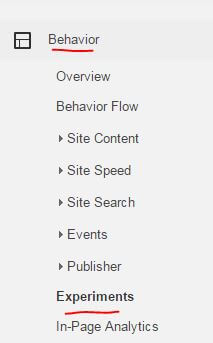Split testing, also known as A/B Testing, is when you create and test two different versions of something to see which one performs better for you business. Whether it’s a sales letter, landing page, headline or e-mail, you set up the split test, then every 2nd prospect sees the new, test version. This allows you to measure clicks, conversions or other website metrics to see which version works better.
There are many benefits of split testing. It’s usually quick and easy to implement. It’s an efficient way to find out whether certain changes will have a positive or negative effect on your conversions or other aspects of your business.
If there is uncertainty or a disagreement about a marketing approach, you can test it and get results in the form of raw numbers to solve the problem. Rather than organising meetings, doing research and trying to rely on opinions and guesses, you can split test it and if there’s a statistically significant difference in the numbers, you will have an answer about what works better. You can use this data to continually optimise and improve your business over time.
Another benefit of this is that you can create a culture of testing and experimentation in your company, rather than always going with the opinion of the most educated or experienced person.
It can also be more beneficial than surveys to find out what your audience wants. Certain visual cues may affect customers in a subconscious way, and they might prefer version A over version B without knowing why. Sometimes odd or counterintuitive things which seemingly contradict conventional marketing wisdom can influence customers in a positive way and increase conversion. It’s usually better to test a hypothesis rather than just guessing or doing what seems to be right logically.
You can test things that are completely new and different from the original, or you can test smaller changes, like a different colour, image, a small change in wording or re-arranging a couple of lines or sentences, or even making something look less fancy and more simple. Things don’t always have to be perfect, and sometimes an appearance of imperfection can have a positive effect and increase conversion. Sometimes small tweaks can work better for customers on a subconscious level and have a surprisingly big impact.
Some common things to split test:
- Landing pages – small tweaks, or entirely different pages
- Long vs short sales copy
- Written copy vs VSL (Video Sales Letter)
- Email autoresponders – subject lines, email content, schedules
- Headlines/headings or subheadings
- Where a form is located on a landing page
- Small wording changes
- The amount of fields and what fields are in a form
- The amount of steps required to complete a purchase
- CTA buttons – different button sizes, colours and wording.
Your website is often the first part of your business that prospects will see, so if you can test and optimise it, you can make big improvements to your traffic, conversion rates, products and revenue. Considering how easy it is to do split testing, it’s pretty much a no-brainer. It’s something every business should be doing in one way or another to improve their marketing and sales.
Split testing tools
While there are many different tools that you can use to split test (Optimizely, VWO, Convert), the simplest tool that you can use is Experiments which is a part of your Google Analytics. Setup your split testing pages A and B and when ready to test go to Analytics – Behavior – Experiments – Create Experiment. Before running your experiment you will need your conversion goal to be setup.







Leave a Reply